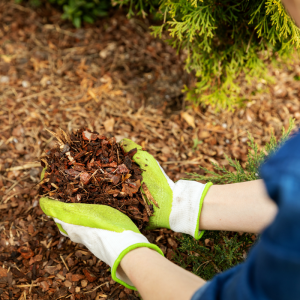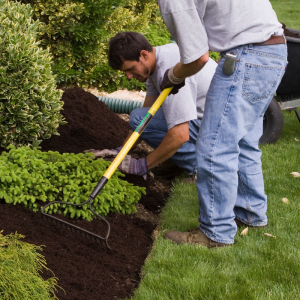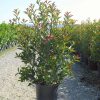If you live in a drought-prone area, like Fort Worth, Texas, or are simply looking to decrease the water your lawn or garden needs, this post is for you! Learn about how mulch functions and which types will best suit your needs.
What is Mulch?
 Mulch is a layer of material placed on the surface of the soil. Its primary purpose is to conserve water, but it also suppresses weeds, provides nutrients, and improves the appearance of your landscape. There are many different types of mulch, including organic (such as bark or wood chips) and inorganic (such as gravel or stones).
Mulch is a layer of material placed on the surface of the soil. Its primary purpose is to conserve water, but it also suppresses weeds, provides nutrients, and improves the appearance of your landscape. There are many different types of mulch, including organic (such as bark or wood chips) and inorganic (such as gravel or stones).
Organic mulches help to improve the soil quality as they break down, while inorganic mulches do not. However, both mulch types can help reduce evaporation from the soil surface and conserve water.
Mulches also help keep plants’ roots in excellent shape and protected from extreme temperatures. Protecting plant roots can further help to reduce water loss and the need for irrigation. Overall, mulch can be an excellent tool for conserving water.
Does Mulch Conserve Water?

Mulch is often touted as a natural water-conserving solution, but does it work? Let’s take a closer look.
If you use an organic mulch, such as bark chips or shredded leaves, and apply it thickly (3 to 4 inches), it will help to reduce water loss from your soil. However, if you use inorganic mulches, such as black plastic, and don’t apply them thick enough, they can increase water loss.
The key to using mulch to conserve water is to make sure you use the correct type of mulch and apply it thick enough to create a barrier between the soil and the air. By doing this, you can help to reduce evaporation and keep your plant’s roots moist. The mulch will also keep the soil in your planters from becoming compacted, improving drainage. Here are some easy tips for applying mulch:
- Get to know how much water your plants need per week. By doing this, you’ll be able to tell when they get too much or not enough water.
- Always check the soil before adding more water when you take your plants outside to water them. A quick way for me is to stick my finger about an inch into the soil. If it feels moist at that depth, I don’t add any water; if it doesn’t feel moist and my finger goes down quickly in the top 6 inches of soil – 2 inches on each side of what I planted in – then I’ll add a little bit of water. Watering plants in pots is similar – quick check, 1 inch deep for containers about 6 inches across. The more subsurface water and the better the drainage, the more often you need to add water.
Need water-conserving solutions for your garden?
Mulch is one of the best ways to conserve water in your garden. By creating a barrier between the soil and the sun, mulch helps reduce evaporation and keeps the ground cooler, both of which help conserve water. In addition, mulch helps prevent erosion and run-off, two more factors that can lead to water waste in your garden.
So why not try using mulch to create a more water-efficient garden? You may be surprised at how much of a difference it can make! Contact Premier Nursery today to find more information on how we can help you with your mulching needs!


